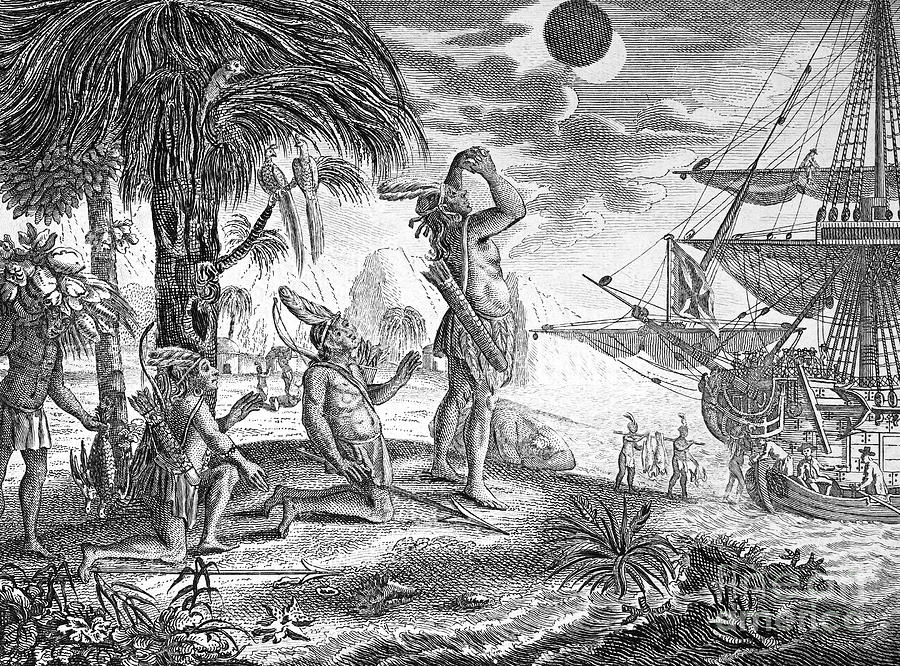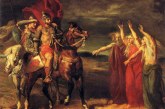
Christopher Columbus’s set off on his fourth and final voyage to America from Cadiz in 1502. Long sea voyages were at that time still highly dangerous undertakings, and Columbus lost two of his four ships during that expedition, while his other two ships were infested with shipworms (these aren’t actual worms, but a type of clam that eats a ship’s wood) and barely seaworthy.
He and his crew were forced to land on the northern coast of Jamaica. At first, the natives received them well. However, this state of affairs didn’t last long. Half of Columbus’s crew mutinied, and frequently raided, robbed or cheated the natives, who eventually decided to stop giving the Europeans food and supplies.
Threatened with starvation, Columbus knew he had to do something quickly. Luckily for him and his men, he had with him certain astronomical tables, including the almanac Ephemeris by German astronomer Johannes Müller von Königsberg (later known as Regiomontanus), which predicted a total lunar eclipse on 29 February 1504, and even gave an estimated time and duration.
Columbus did some calculations to adapt von Königsberg’s estimations to the local time, and then called the chiefs of the nearby tribes to a meeting. He claimed God was angry at them for not giving him supplies, and would make the moon “inflamed with wrath” as a sign of his displeasure. Of course, the chiefs refused to believe him, and some even laughed at his claims.
However, Columbus’s prediction was correct. When the moon appeared over the horizon, it seemed like something had eaten up its bottom part. As the eclipse continued, the rest of the moon was covered, changing into what appeared to be a dark reddish orb – which indeed must have looked “inflamed with wrath”. The natives were so frightened they begged Columbus to intercede with God and promised to supply him in the future.
Columbus retired to his cabin in order to “pray”, but actually to consult his hourglass to see how long the eclipse would last. He knew the moon would remain in the Earth’s shadow for 48 minutes, so he emerged shortly before that time passed, claiming God had forgiven them and would gradually return the moon to normal.
This indeed happened, and Columbus and his crew were able to survive until they were rescued by a ship from Hispaniola (the island where Haiti and the Dominican Republic are located today) on 29 June 1504.




